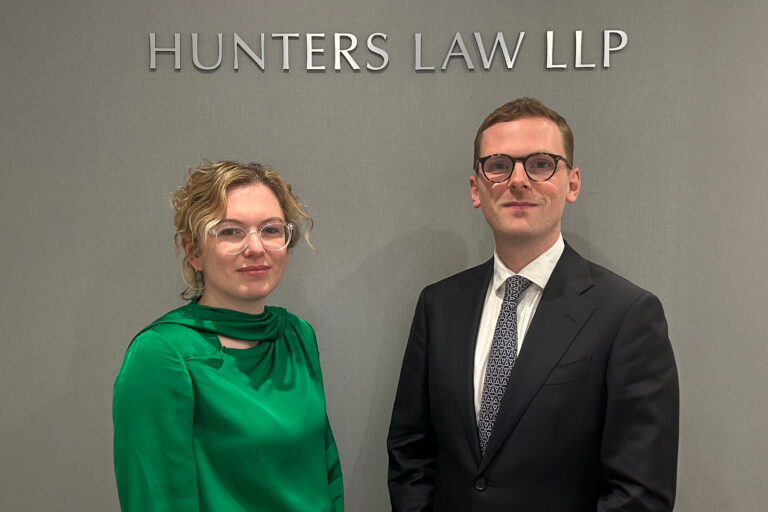Peter Robinson discusses The Electronic Communications Code

The Electronic Communications Code a ‘new human right of mobile telephony’ – Cornerstone V The University Of London
The Electronic Communications Code (2017)
The Electronic Communications Code (‘the Code’) replaced the original telecommunications code in s.10 and Schedule 2 of the Telecommunications Act 1984 and came into force on 28 December 2017. The Code sets out the basis on which electronic communications operators may exercise rights (known as ‘Code Rights’) to deploy and maintain electronic communication apparatus in, over or under land.
Paragraph 9 of the Code sets out how Code Rights are acquired.
A Code Right in respect of land may only be conferred on an operator by an agreement between the occupier of the land and the operator
However, even if parties are not willing to enter into an agreement creating Code Rights, Part 4 and Paragraph 20 of the Code contain detailed provisions enabling the Tribunal to impose agreements by which the unwilling party may be made subject to Code Rights. Paragraph 21 of the Code then sets out the circumstances in which the Tribunal may impose an agreement for Code Rights.
- Subject to sub-paragraph (5), the court may make an order under paragraph 20 if (and only if) the court thinks that both of the following conditions are met.
- The first condition is that the prejudice caused to the relevant person by the order is capable of being adequately compensated by money
- the second condition is that the public benefit likely to result from he making of the order outweighs the prejudice to the relevant person
- In deciding whether the second condition is met, the court must have regard to the public interest in access to a choice of high quality electronic communications services
- The court may not make an order under paragraph 20 if it thinks that the relevant person intends to redevelop all or part of the land to which the code right would relate, or any neighbouring land, and could not reasonably do so if the order were made
Paragraph 26 of the Code also allows the Tribunal to order parties to enter into an agreement creating only interim rights. That procedure, however, enables interim rights to be obtained without the operator proving that all of the paragraph 21 conditions have been met ; the operator need only satisfy the Tribunal that it has a ‘good arguable case’ that the paragraph 21 test is met (paragraph 26(3)(b)).
Cornerstone Telecommunications Infrastructure Limited v University of London [2018] UKUT 356 (LC)
Cornerstone (‘C’) proposed to take access under the Code to the University of London (UL) building in Paddington to undertake pre-installation surveys. UL were unwilling to agree or allow C to enter the building (let alone grant them wider Code Rights). C made an application pursuant to paragraph 26 to the Upper Tribunal (Lands Chamber) to impose on UL an agreement for the exercise of an interim right to survey. Martin Rodger QC, President of the Lands Chamber (‘the President’) gave the decision on the three issues the application raised.
The first issue before the Tribunal was whether it had jurisdiction to impose and agreement under the Code. Was a right of access to undertake surveys alone a Code Right at all ?
The President decided that the right conferred by paragraph 3(a) of the Code to ‘install electronic communications apparatus on over or under land‘ must include a right to enter onto the land and to carry out each step required to achieve the permitted installation and the taking of other necessary steps. Deciding this did not involve implying additional rights or infringe the legal presumption (R (Sainsbury’s Supermarkets Limited v Wolverhampton CC [2011] 1 AC 437, 438) that private property rights will be infringed without clear words. It was simply a matter of giving effect to the language in which the right had been described.
In addition, the right to carry out ‘any works in connection with the installation‘ under Paragraph 3(d) of the Code did not exclude the undertaking of surveys by way of preparation for installation. Paragraphs 3(a) and 3(d) were complementary.
Finally on this point, the President decided that there was no reason why Code Rights could not be conferred and exercised contingently on the outcome of a preliminary survey even if that survey led to the rejection of that site for the installation of apparatus.
The second issue was whether C could seek an interim Code Right without at the same time seeking a permanent right under paragraph 20 of the Code.
The President decided that the Code did not require an operator to request for any equivalent (or other) permanent Code Rights at the same time as making the application for interim rights. Paragraph 26(4) the provision for payment of statutory compensation under an agreement for interim rights and paragraph 23 the ability of the Tribunal to control terms on which interim rights are exercised, were suitable protections for the site owner. Also interim rights did not benefit from any right of statutory continuation.
Finally the Tribunal had to decide whether C had shown a good arguable case that the conditions in paragraph 21 had been satisfied as required by paragraph 26(3)(b).
The President held that a good arguable case had been made. The general application of the paragraph 26(3)(b) requirement was that the operator be able to show, on the balance of probability, that the Paragraph 21 conditions are satisfied. That meant that ‘One side has a much better argument on the material available‘ (Waller LJ in Canada Trust v Stolzenberg (No.2) [1988] 1 WLR 547 at 555).
In future it will be for an operator seeking such rights to provide sufficient information where appropriate by the disclosure of sufficient documents, to demonstrate to the Tribunal that it has a good arguable case that the test in Paragraph 21 is made out.
The President also held that there was no reason for the Tribunal to exercise its discretion under Paragraph 26(3) not to grant the Code Right sought under of the Code. In particular an argument that the ‘generally aggressive and uncompromising tone of [C’s] and its solicitor’s correspondence’ was dismissed by the President. That correspondence, he said, might have been ‘unattractive..but this is not a beauty contest‘.
The Tribunal, therefore, made an order imposing an agreement for interim Code Rights allowing C to undertake surveys and investigations at the building.
Commentary
This decision is the first reported decision on the New Code and although the actual decision is on the fairly narrow point of granting interim rights under the Code, the President’s decision does contain a very good summary of the New Code and how the Chamber perceives it is going to work.
‘Expropriating’ statutes (other than the body of post-war statutes and statutory instruments permitting compulsory acquisition of land) are comparatively rare in English law. Such statutes are generally enacted to achieve a public benefit which is, otherwise, unlikely to be achieved without the introduction of an element of compulsion as between those holding an asset and those seeking to use that asset to satisfy an economic demand.
The Code is, therefore, the product of such an EU policy, intended to encourage competition in the digital market and to minimise obstacles to the creation of digital communications networks. It is ironic that the effect of the Code will continue to be felt long after the UK, finally, leaves the EU.
In many respects the Code operates on the presumption that Code Rights should be imposed on owners of land and buildings. As the President observed, the application of a lower standard of proof to an interim Code Rights application was the result of a policy decision by Parliament ‘to give greater weight to the public interest in the provision of electronic communication networks than to the public interest in the preservation of private property rights‘. More prosaically put, in the context of the formulation of the second condition in paragraph 21,
‘Parliament recognised the importance, in modern life, of what Mr Radley-Gardner (counsel for C) whimsically referred to as ‘the human right of mobile telephony‘
The application of the Code to compel landowners to ‘agree’ to the use of their land and buildings for Code right may be concentrated in areas of the country where digital use is at its highest or lowest. Those being areas in which the operators will seek either to increase capacity on existing networks or to create or improve networks where existing networks need to be developed.
Neither the owners of urban high rise buildings or of greenfield sites in these areas are likely to welcome the powers vested in operators by the Code :
- Even interim rights, such as surveys, are likely to be disruptive. For owners of high rise buildings, ensuring adequate security and safeguarding occupants privacy will be a concern. Rural landowners face potential disorder to daily or seasonal farming requirements ;
- Although compensation can be sought or ordered under the Code, the amounts concerned are unlikely to represent market value for the Code Rights being imposed. This is in contrast to the ‘old’ Code in which the true market value of the rights conferred was the basis of compensation ;
- Permanent Code Rights have protection of minimum periods of termination and of statutory continuation. Unless the initial acquisition of Code Rights can be prevented by the application of Paragraph 21(5), this represents a serious impediment to future development of land and buildings subject to Code Rights.
Conclusions
Our initial experience of the Code is of representatives of operators indiscriminately approaching, sometimes non-commercial, owners of sites considered suitable, at least, for Code Rights surveys. These approaches have, on occasion, been aggressive and have failed to have regard to the procedures in the Code for obtaining Code Rights. Owners should, in the first instance, be aware that the Code does not create carte blanche for operators to obtain Code Rights. It is important for Owners to be aware, and to show those making such approaches that they are aware of the procedures under the Code.
Whilst the ground was not seriously raised in Cornerstone , it may be only a matter of time before we see the issue of a Code Right application refusal founded on Paragraph 21(5) being litigated. In such event it will be interesting to see the extent to which the Tribunal relies on established law in the similar provision in s.30(1)(f) Landlord and Tenant Act 1954.
Pragmatism would seem to suggest that, given the acknowledged objective of the Code of facilitating the grant of Code Rights, resistance by owners to the imposition of the same when sought by an operator is futile or expensive. However there are a number of protective measures in the Code which an owner can use to his benefit on a Code Rights application and negotiation based on these should not be ignored.




